Ultimate Guide to Women's Kitesurf Harnesses
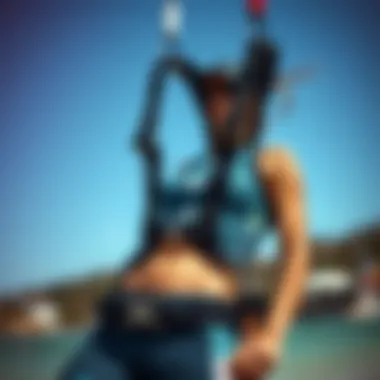
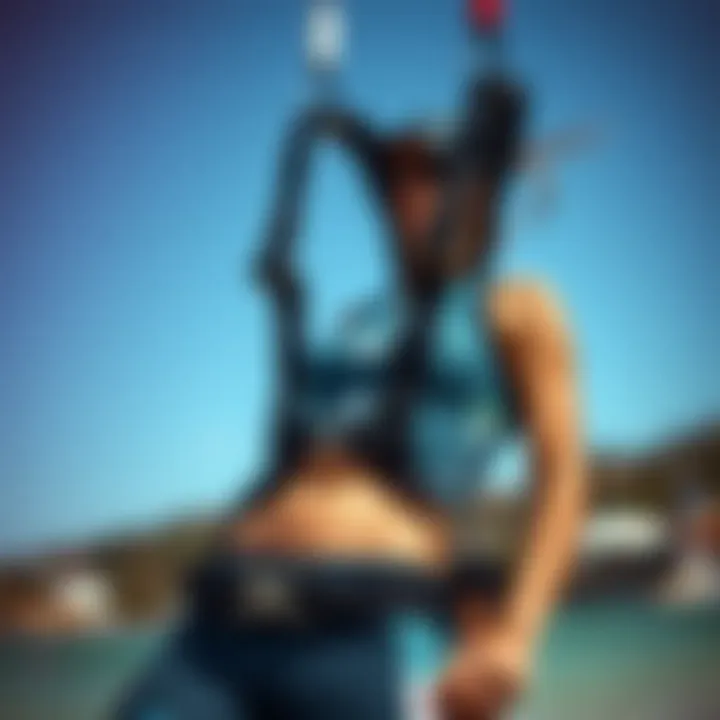
Intro
Kitesurfing has gained considerable traction among water sports enthusiasts, and more women are taking to the waves than ever before. Yet, the equipment available often overlooks the specific needs of female kiteboarders, particularly regarding harnesses. Harnesses do more than just hold the kite; they can significantly affect comfort and performance in the air and on the water. This article aims to provide an in-depth exploration of women's kitesurf harnesses, helping you to make informed decisions when gearing up for your next adventure.
Gear and Equipment
Essential Kiteboarding Gear for Beginners
When starting out in kitesurfing, the right equipment is crucial. Here are a few must-haves:
- Kite: A kite that’s suitable for your weight and skill level is necessary. For beginners, something between 7 to 12 square meters would typically do the trick.
- Board: A larger board can help stability while learning. You might want to look for a twin-tip board for ease of use.
- Harness: This should fit snugly and provide the necessary support. Pay attention to the back support as it plays an essential role in your comfort.
- Safety Leash: This ensures that the kite can be quickly detached in emergencies; essential for safety.
- Impact Vest: A vest adds another layer of safety and can help soften the blow when you're just learning to jump.
Advanced Equipment for Experienced Riders
Once you start mastering the basics, it’s time to upgrade your gear:
- Advanced Kite: Look for something that can withstand stronger winds and offers better maneuverability.
- Performance Board: As you progress, you may be ready for a smaller and lighter board which improves handling.
- High-Performance Harness: These harnesses offer more space for movement and advanced support for tricks.
The right gear not only boosts enjoyment but also ensures that you spend more time kitesurfing and less time getting equipment issues sorted out.
Understanding Women's Kitesurf Harnesses
Choosing a harness tailored specifically for women can make all the difference.
Design and Fit
Generally, women's harnesses are built to accommodate different body shapes. Here’s what to pay attention to:
- Waist vs. Seat: Waist harnesses sit higher on the torso, supporting the lower back. Seat harnesses, on the other hand, provide extra stability by wrapping around the hips.
- Adjustment Features: Find harnesses that offer multiple adjustment points for a customized fit. This will also enhance comfort during long sessions.
Material Selection
Materials used in kitesurf harnesses can vary:
- Neoprene: Commonly used for its flexibility and comfort.
- Sewn Reinforcements: Look for durable stitching as this adds strength.
- Lightweight Foam Padding: Ensures that the harness feels light yet protective.
Incorporating the right materials can markedly improve performance and comfort, especially during extended sessions.
Ending
Women’s kitesurf harnesses are more than mere strap-ons; they play a pivotal role in your kitesurfing journey. From design to material choice, understanding their nuances can enhance not just your comfort on the water but also your overall performance. Whether you're just taking the plunge into the sport or you're already carving waves, a well-chosen harness tailored to your needs will only elevate your experience.
Understanding Kitesurf Harnesses
In the vibrant world of kitesurfing, choosing the right harness can make or break your ride. Understanding kitesurf harnesses is not just about picking a piece of gear; it’s about enhancing your entire kitesurfing experience. The harness serves as a crucial link between you and your kite. It provides support, comfort, and a direct connection translating your movements into control over the kite itself. With this in mind, gaining a deeper understanding of the different types of harnesses and their specific purposes is vital for any female kiteboarder.
Definition and Purpose
At its core, a kitesurf harness is designed to distribute the force exerted by the kite across your body. This distribution alleviates potential strain or discomfort during your ride, allowing you to focus on technique rather than tension. It essentially takes the weight off your arms, providing a solid platform from which to maneuver your kite with finesse. The diverse designs cater to various riding styles and body types, particularly addressing the unique anatomy of women. In this light, the harness transcends its function, becoming an essential tool that can significantly influence performance and overall enjoyment of the sport.
Types of Harnesses
When delving into kitesurf harnesses, the selection can be boiled down to three main types, each with its distinct advantages and features. Understanding these types will help you make an informed choice that aligns with your comfort and riding style. Here’s a closer look:
Waist Harnesses
Waist harnesses are akin to the Swiss Army knife of kitesurf gear––versatile and functional. They are worn around the waist and typically allow for a high degree of mobility. The key characteristic of a waist harness is its ability to provide a secure fit while letting you move freely. This flexibility makes it a popular choice among riders who enjoy freestyle tricks or want to maximize their maneuverability.
- Unique Feature: The high center of gravity offered by waist harnesses allows for a more upright stance.
- Advantages: They often feel less restrictive and can facilitate the execution of complex maneuvers. Plus, they can be more compatible with impact vests, adding an extra layer of safety.
- Disadvantages: They might not provide as much lower back support as other types, which can be a concern for some riders during longer sessions.
Seat Harnesses
On the other end of the spectrum are seat harnesses, designed for fuller support, particularly beneficial for beginners or those who might struggle with balance. These harnesses sit lower on the body, providing enhanced stability. The key characteristic here revolves around their ability to keep you grounded, making them suitable for those who want a more secure connection to their kite.
- Unique Feature: The lower riding position helps distribute forces across a broader area, reducing pressure points.
- Advantages: They usually offer greater comfort for long sessions, particularly for individuals with specific back issues or those who are still mastering their skills.
- Disadvantages: They might restrict some movements compared to waist harnesses, which can be a downside if you’re pursuing advanced maneuvers.
Hybrid Harnesses
Hybrid harnesses merge elements from both waist and seat styles, cleverly designed to offer a balance between freedom and support. This type of harness is gaining traction among intermediate riders looking to combine the best of both worlds. The key characteristic of hybrid harnesses is their dual functionality, allowing for versatility.
- Unique Feature: The adjustable positioning means you can find a comfortable fit tailored to your unique body shape and kiting style.
- Advantages: They strike an excellent balance for riders who value mobility but also need adequate support, making them suitable for a variety of conditions.
- Disadvantages: Depending on the design, they may not always fit as snugly as dedicated waist or seat harnesses, potentially leading to slippage during intense activities.
Understanding these harness types does more than inform your purchase; it aligns your gear with your goals on the water. By knowing the unique attributes of each harness type, you can confidently choose the right tool to enhance your kitesurfing experience.
The Importance of Design for Women
When it comes to kitesurfing, one size does not fit all. Women's kitesurf harnesses are more than just functional gear; they are meticulously crafted to address the unique needs and preferences of female riders. The design of these harnesses focuses not only on performance but also on comfort, ensuring that women can enjoy the sport without compromising on either.
A harness that fits well can make all the difference, especially when it comes to long days spent on the water. Unlike conventional designs, which often reflect a one-size-fits-all approach, women’s harnesses take into account the anatomical differences that affect comfort and efficiency during riding. Without such consideration, performance could take a hit and enjoyment may dwindle, highlighting the need for designs that embrace the female form.
Anatomical Considerations
Understanding the anatomical considerations is paramount in the design of women's kitesurf harnesses. Women's pelvic shapes differ from men's, and this plays a critical role in how a harness fits and performs. For example, many women experience discomfort when a harness does not align well with their body structure, resulting in issues that can detract from the kitesurfing experience. Thus, harnesses designed specifically for women often feature wider hips with a smaller back panel to offer better support and avoid pinching or chafing.
Moreover, the way a harness interacts with the body during movement is crucial. A properly contoured harness allows for better freedom of movement without any unnecessary pressure points. An ergonomically crafted harness can minimize fatigue and stress, making it easier for women to maintain their focus on mastering the waves.
Adjustable Features
This section delves into the adjustable features found in women’s kitesurf harnesses, particularly focusing on straps and back support.
Straps
The straps on a kitesurf harness might appear to be a simple component, but their role is quite significant. A key characteristic of harness straps is their flexibility and adjustability, allowing users to tailor the fit to their unique body shapes and preferences. For many female riders, the right fit means the difference between an enjoyable ride and constant discomfort.
These harnesses typically come equipped with dual straps that allow users to adjust both the width and height, maximizing comfort and security during rides. Women may prefer straps that are padded as they offer an additional layer of protection against abrasions from harness wear. However, it's also important to balance padding with flexibility; overly bulky straps can hinder mobility.
Back Support
Back support is another pivotal element in the design of women's harnesses, serving as the backbone of comfort and performance. This feature often includes additional lumbar support that is engineered specifically for the curvature of a woman’s back. The right back support helps in distributing pressure evenly, which can prevent fatigue, especially on longer rides.
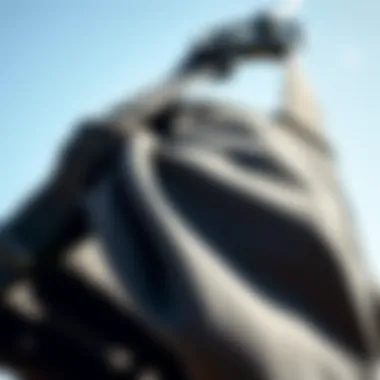
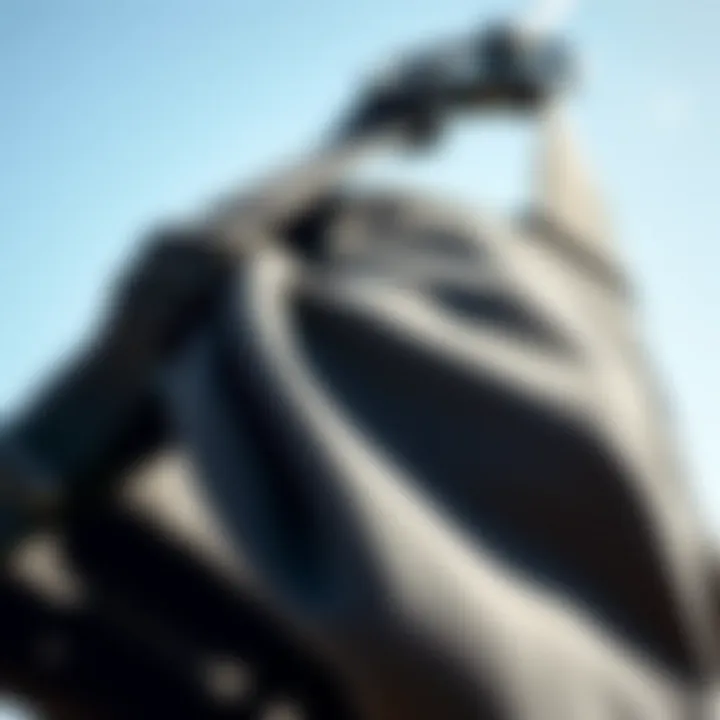
One unique aspect of back support in women's harnesses is that they aim to enhance posture while riding. A properly designed back section not only protects the lower back but also promotes a more effective transfer of energy during kitesurfing maneuvers. However, the challenge lies in finding a balance between cushioning and rigidity; too much cushioning can lead to a loss of energy transfer, while insufficient support can result in discomfort.
As kitesurfing continues to grow in popularity among women, the importance of tailored designs cannot be overstated. Harnesses that consider anatomical differences and incorporate adjustable features will not only elevate the experience of kitesurfing but also inspire more women to embrace the waves.
Selecting the Right Material
When it comes to kitesurf harnesses, the material is not just a mere afterthought—it's the backbone of performance and comfort. A well-chosen fabric can make all the difference in your experience on the water. The right material affects durability, weight, and water resistance, which are key considerations for any kiteboarder, especially women who may have different needs based on body shape and usage patterns.
Durability
Durability is a non-negotiable attribute that a kitesurf harness should possess. The ocean and wind do not hold back; they can be as unforgiving as an unsweetened cup of coffee. Harnesses undergo rigorous conditions that can test their limits over time. Materials like nylon and polyester are common choices due to their high tensile strength. Moreover, some brands incorporate ripstop technology to prevent tears from extending—like putting a patch on a leaky boat.
Investing in a durable harness can save you money in the long run as it withstands the wear and tear of frequent sessions. After all, no one wants to find themselves stranded on a sandbank because their gear gave up the ghost.
Weight and Comfort
Next up is the balance between weight and comfort. A heavy harness can feel cumbersome, much like wearing a thick winter coat on a warm day. Lighter materials can increase mobility and flexibility, essential factors when you're trying to execute sharp turns or jumps. But being lightweight isn't enough if it sacrifices comfort. Many modern harnesses are designed with padding that molds to your body, reducing pressure points like a well-cooked soufflé rising gently in the oven. Materials like neoprene are often used in the lining because they provide a snug but comfortable feel.
Wearing a harness shouldn't feel like a punishment; it should be a second skin. Some harnesses even feature breathable materials that help wick away moisture, keeping you cool when the sun's blazing down.
Water Resistance
Water resistance is more than just a buzzword; it's a vital quality that can affect performance. If your harness absorbs water like a sponge, it can become heavier, pulling you down when you should be gliding. Many manufacturers treat their harnesses with water-resistant coatings. These coatings, while lightweight, form a shield that repels water, allowing you to ride smoother and conserve your energy for that next big move.
"A waterproof harness is not just a benefit; it's a necessity in ensuring that you can perform without distraction."
Choosing the right materials combines all these factors: durability, comfy fit, and water resistance. These elements converge to create a truly effective kitesurf harness that caters to the specific needs of female kiteboarders.
In summary, when selecting a harness, focus on material characteristics that enhance longevity, provide comfort, and resist moisture. Investing time in research will considerably enrich your kitesurfing experience.
Fit and Comfort in Kitesurf Harnesses
When it comes to kitesurfing, the right harness can be the difference between a day full of thrill and one filled with discomfort. Fit and comfort are paramount factors to consider in choosing a kitesurf harness, especially for women who face unique anatomical challenges. A poorly fitting harness can lead to chafing, restricted movement, and even injury, which can cut a session short or deter a rider from ever hitting the waves again.
Sizing Guidelines
Choosing the right size for a kitesurf harness isn't just about picking a label that looks good. It’s essential to get it right, as each brand may have a different sizing chart, and not all harnesses fit the same way. Here are key points to ponder:
- Measure Your Waist: Start with your waist measurement, not your pants size. Using a soft measuring tape, find the narrowest part of your waist, usually above the belly button. This is typically where the harness will sit.
- Consider Hip Width: Make sure to also factor in your hips, as a wider hip can change how the harness fits. If you have a more pronounced hip structure, this can sometimes mean going up a size to ensure you have comfort without sacrifice.
- Consult Size Charts: Look at the manufacturer’s size chart for each brand. This will often provide guidance tailored to their specific fit, helping to narrow down your choices swiftly.
- Growth Potential: If you anticipate growth or changes in your body, consider that when choosing your size. It's often advisable to select a harness with adjustable features.
Having the right size can make all the difference, allowing for better performance and enjoyment on the water.
Try Before You Buy
One of the most effective ways to ensure a proper fit is to try before you buy. This might sound straightforward but takes on significant importance in kitesurfing gear.
- Visit Local Shops: Before you settle on an online order, check if there are local shops that specialize in water sports gear. They often carry a range of harnesses that you can physically try on. This hands-on approach allows you to feel how the harness contours to your body.
- Movement Test: When trying on a harness, go through the range of motions you commonly use while kitesurfing. Jump around a bit, crouch, and stretch your arms.
- Adjustment and Comfort: Pay attention to how easy it is to adjust the harness. An ideal harness should feel snug without being restrictive. Adjust the straps to see how it feels when tightened or loosened. A harness that’s easy to adjust can help accommodate different conditions too—from casual cruising to tricking.
- Consult Experienced Riders: Don’t be shy to ask for advice from staff at the shop or seasoned kitesurfers around you. They can often spot fit issues that a casual buyer might miss. Their insights on comfort can help inform your choice.
Trying on various harnesses will not just improve comfort but could enhance your performance as it allows freedom of movement and solid support.
In summary, a proper fit and comfort level is critical for getting the most out of your kitesurfing experience. Think of the harness as a second skin—not too tight, not too loose, just right so you can focus on mastering your next ride without distractions.
Performance Impact of Harness Design
The design of a kitesurf harness goes beyond mere aesthetics; it plays a pivotal role in the performance of kiteboarders. Understanding how harness design impacts control, power transfer, and overall maneuverability is essential for anyone serious about maximizing their kitesurfing experience. This understanding not only enhances performance but also brings a level of safety and comfort that can’t be underestimated.
Control and Power Transfer
Harnesses that are well-designed allow for significant control and optimal power transfer from the kite to the rider. Think of the harness as a bridge connecting the kite’s force to your body. A well-fitted harness distributes the pressure evenly and keeps your upper body aligned. This alignment is crucial during high-speed turns or jumps, as it allows riders to manage the kite’s pull effectively.
- Weight Distribution: Harnesses that lack proper ergonomic design tend to put excessive strain on certain areas like the lower back. A harness that fits snugly distributes the load across the torso, leading to less strain and a more responsive ride.
- Power Transfer: When the harness is too loose or tight, it can lead to inefficient power transfer. Choosing a harness that matches your body shape ensures the kite's pull is adequately translated into board speed and maneuverability. Riders often find that stock designs don’t always cater to individual body types; therefore, customizing the harness becomes a beneficial consideration.
Harnesses with rigid panels also allow better control. This is particularly important for those who like riding powered-up, where every ounce of control translates directly into performance. For kiteboarders who seek a more freestyle approach, a softer harness can offer the flexibility needed for tricks, but balance this with the need for power control.
Effect on Maneuverability
Maneuverability is the name of the game in kitesurfing, and the harness design influences this factor more than one might think. A good harness allows for fluid movement without hindrance, enabling advanced maneuvers and quick directional changes. Here are some aspects that highlight its importance:
- Low Profile Design: Harnesses with a low profile allow for greater freedom of movement. This is vital when executing tight turns or jumping. A bulky harness can impede movement, making it difficult to respond quickly to sudden changes in wind direction or speed.
- Adaptive Features: Innovations in harness design have led to features that adapt to the rider’s movements. Some harnesses include flexibility zones that accommodate body motion, allowing for unrestricted movement during tricks or when riding waves. This adaptability ensures that the harness does not become a limiting factor in performance.
- Attachment Points: The placement of attachment points for the leash also affects maneuverability. A harness that positions these points strategically minimizes drag, thus allowing for smoother transitions and turns.
Takeaway: An effectively designed harness not only enhances comfort but also gives riders the capability to navigate challenging conditions with agility and skill.
In closing, the impact of harness design on performance cannot be overlooked. Whether you're cruising along the coast or attempting complex tricks, the synergy between your harness and body can make all the difference. It's vital to invest time in selecting a harness that complements your riding style, as the right fit can mean the difference between a ho-hum ride and pure exhilaration on the waves.
Top Brands for Women's Kitesurf Harnesses
When it comes to kitesurfing, the choice of gear can make or break your experience on the water. Women's kitesurf harnesses are no exception, and knowing the top brands is crucial. These brands not only represent quality but also cater specifically to the unique needs of female riders. With various features and styles, selecting a harness from a reputable brand ensures durability, performance, and comfort.
Brand Overview
Brand 1: Mystic
Mystic is a standout name in the kitesurfing world, particularly for its attention to female ergonomics. The company's harnesses are crafted to fit the contours of a woman’s body, mitigating discomfort during rides. A key characteristic of Mystic harnesses is their use of advanced materials that are both lightweight and robust. The impact of their design is evident in the Connect Pro, which features a triple padding system that allows for longer sessions without unnecessary pressure points. However, the price point might be on the higher side, which can be a consideration for some.
Brand 2: Ion
Ion has made waves with its stylish yet functional harnesses tailored for women. Their harnesses are notable for incorporating Clever Harness Design, which allows for adjustable fit and increased mobility. The Nova model stands out due to its Flex Zone, offering flexibility in the lower back while maintaining enough support. Many users appreciate the fashion-forward designs but have pointed out minor durability issues after extensive use. Nonetheless, Ion harnesses are often regarded as great entry-level options for newcomers to kitesurfing.
Brand 3: Ozone
Ozone is well-regarded in the kitesurfing community, and their focus on creating highly adaptable gear is commendable. The Access harness caters specifically to various body types, highlighting its versatility. Ozone's notable feature is their use of lightweight neoprene, which ensures comfort during prolonged usage. Positive reviews highlight the ease of adjusting straps to achieve a perfect fit, although some riders wish for additional padding in specific areas. For those seeking flexibility in harness choice, Ozone remains a solid option.
Customer Reviews and Ratings
User feedback is a critical element when choosing a harness. Potential buyers often look for reviews that reflect real-life experiences with various brands. Platforms like Reddit and specialized kitesurfing forums are treasure troves of community-driven insights. On these platforms, users share their thoughts on comfort levels, the lifespan of harnesses, and how well they perform in various conditions.
"I've tried a couple of brands, but Mystic's harness suits me the best. It's like it was tailored just for my body!" - A satisfied customer.
Aggregating reviews can help in gauging overall satisfaction. Ratings typically highlight critical aspects such as:

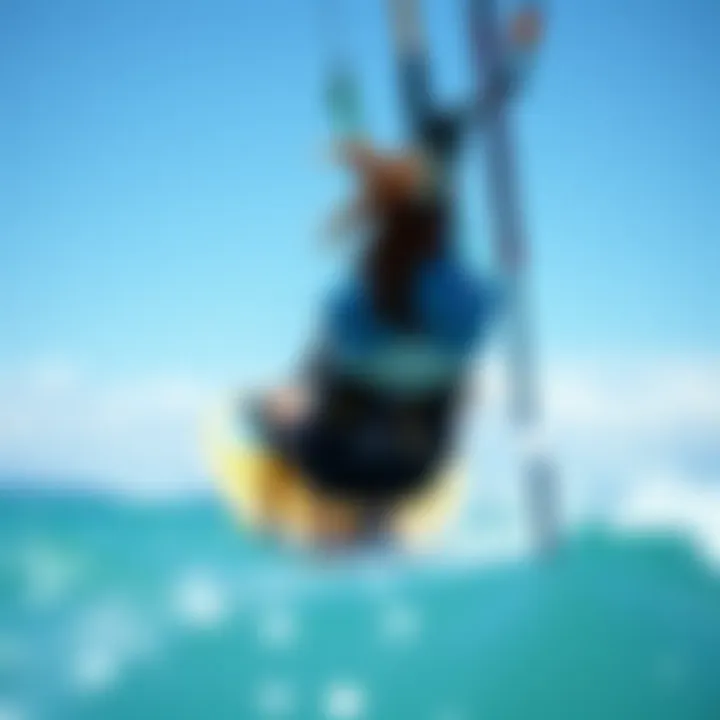
- Comfort during use
- Durability after multiple sessions
- Fit adjustments available
- Overall value for money
In summary, familiarity with these brands like Mystic, Ion, and Ozone arms kiteboarders with knowledge to make informed choices aligned with their personal kitesurfing style. Ultimately, the right harness can enhance not just performance, but also the overall enjoyment of the sport.
Innovative Technologies in Harness Design
The evolution of kitesurf harness technology has significantly influenced how women experience the sport. Harnesses are not just a matter of comfort; they directly impact performance, safety, and rider enjoyment. As manufacturers pay closer attention to the unique needs of female kiteboarders, innovative technologies are taking center stage. These advancements not only cater to traditional demands but also anticipate future trends and requirements.
Smart Materials
Smart materials are revolutionizing the way harnesses are conceptualized and designed. These materials adapt to environmental conditions and user movements, providing a level of responsiveness that conventional materials simply can't match. For instance, some harnesses now feature memory foam liners that mold to the body over time, ensuring a custom fit that enhances comfort and support during long sessions on the water. Additionally, smart textiles may integrate moisture-wicking properties, ensuring that riders stay dry and comfortable regardless of the conditions.
Benefits of Smart Materials:
- Enhanced Comfort: Molds to the body shape, reducing pressure points.
- Temperature Regulation: Keeps the rider cool or warm based on the weather.
- Durability: Helps the harness withstand wear and tear in saltwater environments.
This combination of comfort and durability is crucial for women who may have different body shapes and sizes, making it imperative that manufacturers consider these variables when designing smart materials for harnesses.
Ergonomic Features
Ergonomics play a critical role in ensuring that kitesurf harnesses correctly fit the unique anatomy of female riders. With features like contoured padding and adjustable straps, brands are moving toward a design philosophy that prioritizes the natural curve of the body. It's not just about providing support; it’s about delivering functionality aligned with the rider's movements. Many contemporary designs include a lower back support feature that helps distribute the weight evenly, reducing the risk of injury and enhancing overall control.
Key Ergonomic Features to Look For:
- Correct Positioning: Harnesses designed to ensure proper alignment of the body during kitesurfing.
- Adjustable Components: Features that allow altering of the fit based on personal preference.
- Padding: Enhanced cushioning to prioritize comfort during extended use.
Ergonomic designs can mean the difference between a good session and a great one. Riders should carefully assess how well each harness aligns with their specific body dynamics.
The embrace of high-tech materials alongside ergonomic design principles signifies a broader shift within the kitesurfing industry, fostering an environment where women kiteboarders can not only perform at their best but also enjoy every moment on the water. As we continue to see advancements in these technologies, the future of women's kitesurf harnesses looks promising.
Maintaining Your Kitesurf Harness
Keeping your kitesurf harness in tip-top shape isn't just about aesthetics; it's about ensuring safety and performance on the water. A well-maintained harness can enhance your kiteboarding experience by providing consistent support and comfort, which is essential for achieving those exhilarating rides. Moreover, neglecting its upkeep might lead to safety hazards during your adventure. Thus, let’s dive into some practical maintenance tips that can extend the life of your harness and keep it performing at its best.
Cleaning Techniques
Firstly, cleaning your harness regularly is crucial. Saltwater and sand can cause wear and tear over time, so rinse your harness after each use in fresh water. Not only does this help remove salt and grime, but it also aids in maintaining flexibility. Here are some specific cleaning techniques you can follow:
- Rinse Thoroughly: Immediately after your session, use a hose or a bucket to wash away any salt or dirt. Focus especially on the seams and connections.
- Use Mild Soap: For deeper cleaning, a mix of mild soap and water can be effective. Just avoid harsh chemicals, as they can degrade the materials. Use a soft brush to gently scrub any particularly dirty areas.
- Dry Properly: After washing, hang your harness up to air dry. Avoid exposing it directly to sunlight for extended periods, as ultraviolet rays can weaken the fabric over time.
A clean harness not only performs better but also lasts longer, ensuring you get more bang for your buck.
Storage Recommendations
The way you store your harness can greatly affect its longevity. Here are some simple yet effective storage practices:
- Dry Before Storing: Always ensure your harness is completely dry before storing it. Moisture can lead to mold and mildew, which can damage the fabric and hardware.
- Use a Storage Bag: Consider investing in a storage bag or container that allows for proper ventilation. Avoid squeezing it into a tiny space where it might crumple or lose shape.
- Keep Away from Heat Sources: Store your harness in a cool, dry place away from direct heat sources. Extreme temperatures can warp the materials and affect their durability.
- Avoid Heavy Loads on Top: Finally, don’t stack heavy items on top of your harness when storing it. This can create pressure points that may deform the shape over time.
By implementing these cleaning techniques and storage recommendations, you can significantly enhance the durability and performance of your kitesurf harness, which in turn makes for smoother sailing when you glide across the waves.
Common Issues with Kitesurf Harnesses
Kitesurf harnesses, although seemingly straightforward, can present a few bumps along the way for users. Understanding these common issues is vital for ensuring not just comfort, but also safety and performance in this exhilarating sport. If you're a budding kiter or an experienced kiteboarder looking to refine your gear, pay heed to these pitfalls. Tackling size and fit problems alongside recognizing signs of wear and tear can make a significant difference in your ride.
Size and Fit Problems
In the realm of kitesurfing, a well-fitted harness isn't just a nice-to-have—it's an absolute necessity. Think of it as the backbone of your kitesurfing experience. A harness that is either too tight or too loose can be more than just uncomfortable; it can hinder your performance on the water.
When sizing a harness, it's important to consider:
- Sizing Charts: Most manufacturers offer sizing charts that correlate waist and hip measurements to harness sizes. Relying on these can save quite a lot of future headaches.
- Personal Preference: Different styles may feel better for different riders. Some kiteboarders prefer a snug fit, while others might lean towards a looser feel for more flexibility.
- Testing: Always try on multiple sizes before making a purchase. A discrepancy of even an inch can affect performance dramatically.
- Fit Adjustments: Adjustable straps can help fine-tune your fit. Look for harnesses that provide these features to accommodate your body’s unique shape.
Improper fit can be particularly challenging for women who may find that some brands do not address their anatomical differences adequately. Tailoring the right fit, therefore, becomes an essential part of the process in finding your ideal harness.
Wear and Tear Indicators
Kitesurfing can be a rough and tough sport, and harnesses can take quite a beating through the years. Knowing when to retire your trusted equipment is crucial for both safety and performance.
A few key indicators of wear and tear include:
- Frayed Straps: If the straps appear worn or have visible fraying, it's time to consider a replacement. Straps are crucial as they hold everything in place and ensure that your harness remains secure while you're riding.
- Cracked Material: Over time, materials can get stiff and develop cracks, particularly in older models. This compromises their integrity.
- Discoloration: While a little fading is normal, excessive discoloration can indicate that the harness has been exposed to too much sun or salt. This can weaken the fabric.
- Stitching Issues: Inspect the stitching for any loose threads or unraveling. The seams are often the first to give way, and a compromised seam can lead to harness failure at the worst possible time.
A well-cared harness can enhance your kitesurfing experience, ensuring you stay safe and have fun on the water.
Kitesurfing Accessories to Consider
Kitesurfing is not merely about harnesses and kites. To enhance your experience on the water, a variety of accessories play a vital role. This section highlights essential kitesurfing accessories that every kiteboarder, especially women, should consider. Each accessory serves unique functions that can significantly contribute to safety, comfort, and overall performance during your sessions.
Impact Vests
When it comes to kitesurfing, safety is paramount. An impact vest is a great investment that provides an additional layer of protection, particularly for those times when you might miss a landing or wipe out unexpectedly. These vests are designed to absorb the shock from falls, thereby minimizing the risk of injury to your torso.
- Protection from Impact: One of the primary benefits of wearing an impact vest is how it cushions you against hard landings or collisions with your board or other objects in the water. Given how unpredictable the ocean can be, having this protection is crucial.
- Spinal Support: Many impact vests also offer lumbar support, which can improve posture while riding. Maintaining a good body position not only increases comfort but could also improve your control over the kite and board.
- Buoyancy: Beyond protection, certain vests provide buoyancy that could help keep you afloat in case of an unexpected mishap.
While choosing an impact vest, pay attention to the fit. It should be snug without being restrictive, allowing for a full range of motion. You don’t want to find yourself in a tight situation—literally. Opt for styles that are specifically designed for women, as these tend to conform better to body shapes without compromising functionality.
Board Leashes
Next up is the board leash, which is another must-have for kiteboarders. The leash connects your board to your harness, ensuring that your board does not drift away every time you take a tumble. Losing your board can be more than a minor inconvenience, especially in choppy waters or strong winds.
- Prevention of Loss: A well-secured board leash prevents your board from floating away. This is particularly essential during heavy wind conditions where it can quickly go out of reach.
- Quick Recovery: In the unfortunate event of a fall, a leash allows for a swift recovery of your board. You won’t have to swim far to retrieve it, making your sessions more efficient and enjoyable.
- Safety Aspect: The leash acts as a safety precaution. Without one, there’s a chance that your board could pose a threat to you or others—imagine the potential risks when boards are flying around uncontrollably.
When selecting a board leash, consider features such as the length and the material. Leashes that are too long can create drag, while those too short may snag and create a risk for wipeouts. Look for durable materials that can withstand salty water and wear.
Harnesses and Safety Considerations
When engaging in the exhilarating sport of kitesurfing, safety cannot be an afterthought. The right harness not only enhances your performance but also significantly affects your overall safety on the water. A well-fitted harness offers the necessary support while allowing for an agile range of movement, key in unpredictable conditions that are common to kitesurfing. Furthermore, understanding the safety features integrated within each harness can make a world of difference in dire situations.
Ensuring Proper Fit


A harness that fits correctly is non-negotiable in kitesurfing. The crux of ensuring safety begins here. A snug fit keeps your body stable, minimizing the risk of injury during sudden movements or if a crash occurs.
- Measure Accurately: Always take the time to measure your waist and torso. Each brand may differ slightly in sizing, so consult their specific guidelines.
- Adjust Tightness: Harnesses often come with adjustable straps. Ensure these are properly secured but not overly tight, as this can restrict movement and blood circulation.
In addition to measuring and adjusting, consider the type of harness; whether it’s a seat harness or a waist harness, each type will sit differently on your body. A waist harness should sit just above your hips, whereas a seat harness will cradle the pelvic area. A good fit can be likened to a well-tied bow—neat but secure.
Emergency Release Systems
Safety features, particularly emergency release systems, deserve special attention. These mechanisms are designed to provide quick detachment from your kite in an emergency, allowing you to release the tension from your lines swiftly.
- Types of Systems: Familiarize yourself with how different systems operate, such as a one-pull release or designated harness clips that offer immediate disengagement from the kite power. This can be life-saving during turbulent wind conditions, sudden falls, or when dealing with equipment failures.
- Practice Regularly: Just knowing how the system functions isn’t enough. Regular practice in controlled conditions can ensure you remain calm and efficient should an emergency arise.
It’s essential to check your harness before each session, looking for signs of wear on the emergency systems. A compromised release could spell disaster on the water.
"Safety is not just a priority, it’s a lifestyle. Check, adjust, and be ready to enjoy your time on the waves!"
By understanding the significance of proper fit and the role of emergency release systems, kiteboarders can enhance their safety and confidence while riding. Always remember, a sound safety net allows for a more enjoyable and spirited experience on the water.
For more detailed safety guidelines, visit kitesurfingsafety.org.
Stay informed and prioritize your safety!
The Evolution of Women's Kitesurf Harnesses
The evolution of women’s kitesurf harnesses is quite an important topic. This subject is essential for understanding how kitesurfing gear has come to cater more specifically to female athletes. As kitesurfing has grown in popularity, so too has the recognition of the need for gender-specific equipment. Women's kitesurf harnesses have evolved not only to ensure a better fit but also to improve comfort and overall performance while embracing style.
Historical Context
Looking back, it’s clear that women's kitesurf harnesses have undergone significant transformations since the sport’s inception. Initially, kitesurfing gear was designed with a one-size-fits-all approach, which typically meant that women had no choice but to wear harnesses tailored for men. This led to discomfort and a disconnect between the rider and the equipment. Ultimately, it became evident that there was a strong demand for harnesses that acknowledged the unique physical attributes of women.
Manufacturers began to pay attention to a variety of factors. Some of these were the distinct anatomical shapes and sizes of women, which differ from their male counterparts. By accommodating these differences, brands unlocked an opportunity to enhance both safety and performance.
Design Changes Over Time
In recent years, the design of women's kitesurf harnesses has progressed leaps and bounds. Through extensive research and feedback from female riders, manufacturers have experimented with materials, shapes, and integrating features that respond to the demands of the sport. One key aspect to consider is the shift from rigid designs to more flexible and adaptable options.
- Improved Fit: Harnesses now incorporate contouring and adjustable straps. This helps in achieving a snug fit, reducing the risk of slippage or discomfort during rides.
- Lightweight Materials: Advances in technology have led to the development of lightweight yet durable materials. Many brands use high-quality foam and fabrics that provide support without weighing the rider down.
- Enhanced Safety Features: Design changes have also included the integration of quick-release systems and additional padding to protect sensitive areas. This has significantly improved overall safety during kitesurfing.
As the sport of kitesurfing continues to progress, the importance of female-specific harness designs cannot be overstated. Brands like Mystic and ION have been at the forefront of this movement, taking strides in catering toward the female demographic with innovative harness designs.
"The best equipment blends seamlessly into the rider’s style and skill, enhancing what they can achieve on the water."
The evolution of women's kitesurf harnesses embodies a journey of understanding and address the needs of female kitesurfers. With ongoing developments, one can expect that future designs will continue to break barriers. A well-designed harness not only improves performance but also builds confidence, inspiring more women to take to the waves.
Future Trends in Kitesurf Harness Technology
As the kitesurfing industry continues to evolve, the focus on harness technology becomes increasingly crucial. This section sheds light on what kiteboarders can expect in the near future, especially female riders who require unique designs and materials tailored to their anatomy. Keeping an eye on these trends not only enhances performance but also plays a role in environmental sustainability.
Sustainable Materials
The push for sustainability is shaping the product landscape in many industries, and kitesurf harnesses are no different. Manufacturers are beginning to explore a range of eco-friendly materials that both minimize environmental impact and maintain performance standards. For example, the incorporation of recycled plastics and natural fibers is gaining traction.
These materials contribute to a smaller carbon footprint and often offer durability akin to traditional options. Kiteboarders can expect harnesses made from materials like hemp and recycled polyester, which are not only lighter but are also designed to withstand wear and tear from saltwater and UV exposure. This is noteworthy considering the need for gear that lasts longer in a demanding environment.
While the trend leans towards using more sustainable materials, it also highlights the importance of ethical practices within the entire manufacturing process. Many brands are beginning to disclose their sourcing practices and improve direct engagement with communities. This transparency builds trust and keeps consumers informed about the environmental consequences of their gear choices.
Adaptive Designs
In the surf and kitesurf space, adaptability in design plays a vital role. As women's kitesurfing continues to gain momentum, harnesses designed specifically for women are evolving to better meet their diverse needs. The upcoming designs aim to accommodate a wider range of body types and preferences, focusing on customizability and personalized functionality.
Recent innovations in this area include adjustable harness systems that offer enhanced fit without compromising on support. Imagine harnesses with modular components, allowing riders to swap parts based on their comfort and riding style. This means that what might work for a beginner may differ from the needs of an experienced rider, and being able to modify a harness accordingly will undoubtedly enhance the riding experience.
Some brands are even exploring smart technologies, like wearable sensors that can track performance metrics. Riders can gain insights into their technique and adjust their gear accordingly, helping to elevate their skills on the water.
In summary, the future of kitesurf harnesses leans heavily toward sustainability and adaptability. By focusing on eco-friendly materials and innovative, customizable designs, the industry aims to provide gear that supports performance while being mindful of our planet's health. These changes are not just trends, they represent a significant shift in how the kitesurfing community values their equipment and its impact.
Frequently Asked Questions About Women's Kitesurf Harnesses
When it comes to kitesurfing, understanding the nuances of women's kitesurf harnesses can greatly enhance both comfort and performance. This section addresses common queries that many kiteboarders, especially women, may have. Answering these questions not only helps riders make informed choices but also fosters a deeper appreciation for the design and functionality of their gear.
What Size Should Choose?
Choosing the right size harness is critical for optimal performance on the water. A harness that’s too loose can lead to discomfort and reduced control, while a tight fit can restrict movement and cause chafing. Here are some pointers to help you find the correct size:
- Know Your Measurements: Start by measuring your waist and hips accurately. This will give you a foundational starting point.
- Check Size Charts: Most brands offer size charts. Be sure to compare your measurements against these charts, as sizes can vary significantly between manufacturers.
- Consider the Fit Type: Different types of harnesses (seat, waist, hybrid) have unique fits. For instance, a seat harness will sit lower and may fit differently compared to a waist harness.
- Try It On: If possible, physically try on the harness before purchase. Ensure it feels snug but not restrictive, and move around to test flexibility.
Finding the right size enhances both safety and enjoyment, allowing you to focus on the thrill of riding.
How Often Should Replace My Harness?
The lifespan of a kitesurf harness varies based on usage and maintenance. Knowing when to replace it can prevent safety issues. Here are some key indicators:
- Wear and Tear: Regularly inspect your harness for frayed straps, cracks in the plastic components, or worn padding. If you notice major signs of damage, it’s time to invest in a new one.
- Comfort Levels: Over time, materials may break down, leading to a loss of support and comfort. If your harness no longer feels right, don’t hesitate to look for a replacement.
- Frequency of Use: If you’re an avid kitesurfer who’s out on the water multiple times a week, you may need to replace your harness every season or two.
- Manufacturer Recommendations: Some brands offer insights on their harnesses’ longevity. Check with the manufacturer to see if they have a general recommendation for replacement timings.
Overall, keeping an eye on these considerations ensures that your harness remains safe and functional, contributing positively to your kitesurfing experience.
Concluding Thoughts on Women's Kitesurf Harnesses
As we wrap up our detailed exploration of women's kitesurf harnesses, it’s crucial to understand that these are not just accessories; they are essential components of the kitesurfing experience. The right harness can significantly affect comfort, performance, and safety on the water. Throughout this guide, we have delved into various aspects of harnesses, from their design tailored to female anatomy to innovative materials that enhance durability and comfort.
Harnesses play a pivotal role in how effectively a rider can control their kite and maneuver over water. For women kiteboarders, the importance of fit cannot be overstated. With unique physical characteristics, having a harness that aligns with one’s body shape can mean the difference between a thrilling ride and a frustrating struggle. Women should prioritize harnesses that feature adjustable elements, adequate back support, and proper sizing. These design elements not only improve user experience but also contribute significantly to safety.
Moreover, we discussed technology advancements that are shaping the future of kitesurf harnesses, emphasizing sustainable practices and adaptive designs. As manufacturers begin to explore greener materials and more adaptive fitting systems, kiteboarders can expect improvements that align with their values while still enhancing their performance. This evolution in design highlights the industry's responsiveness to its consumers' needs and preferences.
"A harness is more than just a piece of equipment; it’s an extension of the rider's abilities and a key to unlocking potential on the water."
Summary of Key Points
- Anatomical Design: Women's kitesurf harnesses are designed to cater to different body shapes, ensuring better comfort and fit.
- Material Selection: Choosing the right materials impacts durability, weight, and performance.
- Importance of Adjustability: Adjustable features in harnesses enhance overall usability and comfort for female riders.
- Technological Advancements: Innovations in harness design, including sustainable materials, are spoiling riders for choice.
Encouragement for Informed Choices
When it comes to choosing a kitesurf harness, informed decisions are pivotal. Take the time to try multiple fits and styles before settling on one. Engage with communities like those found on platforms such as Reddit to get firsthand opinions from fellow kiteboarders. Consider your personal riding style—whether it's freeride, freestyle, or wave riding—when making your selection.
Moreover, don’t hesitate to reach out to brands directly for questions about specific features or materials. As the market continues to evolve, staying informed about the latest trends and how they can enhance your experience will allow you to ride with confidence.
In the fast-paced world of kitesurfing, knowledge is power. Equip yourself with the advocacy to seek out the best options that align with your specific needs, ultimately leading to a more enjoyable and fulfilling kiteboarding experience.















